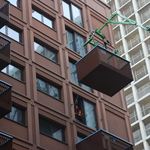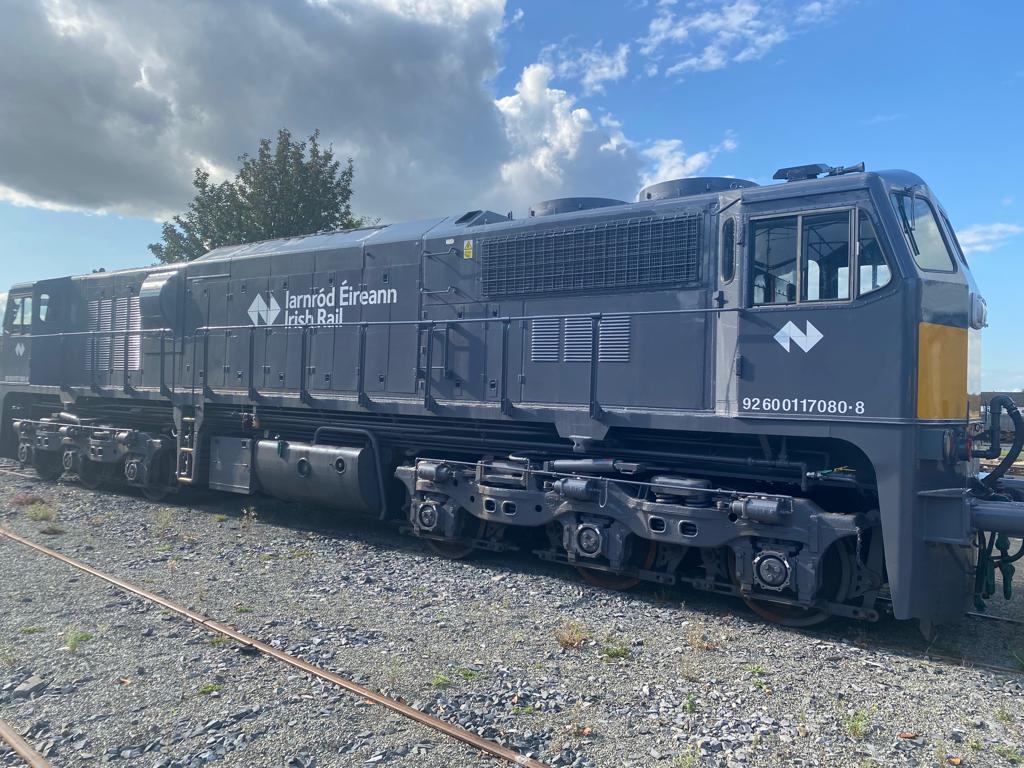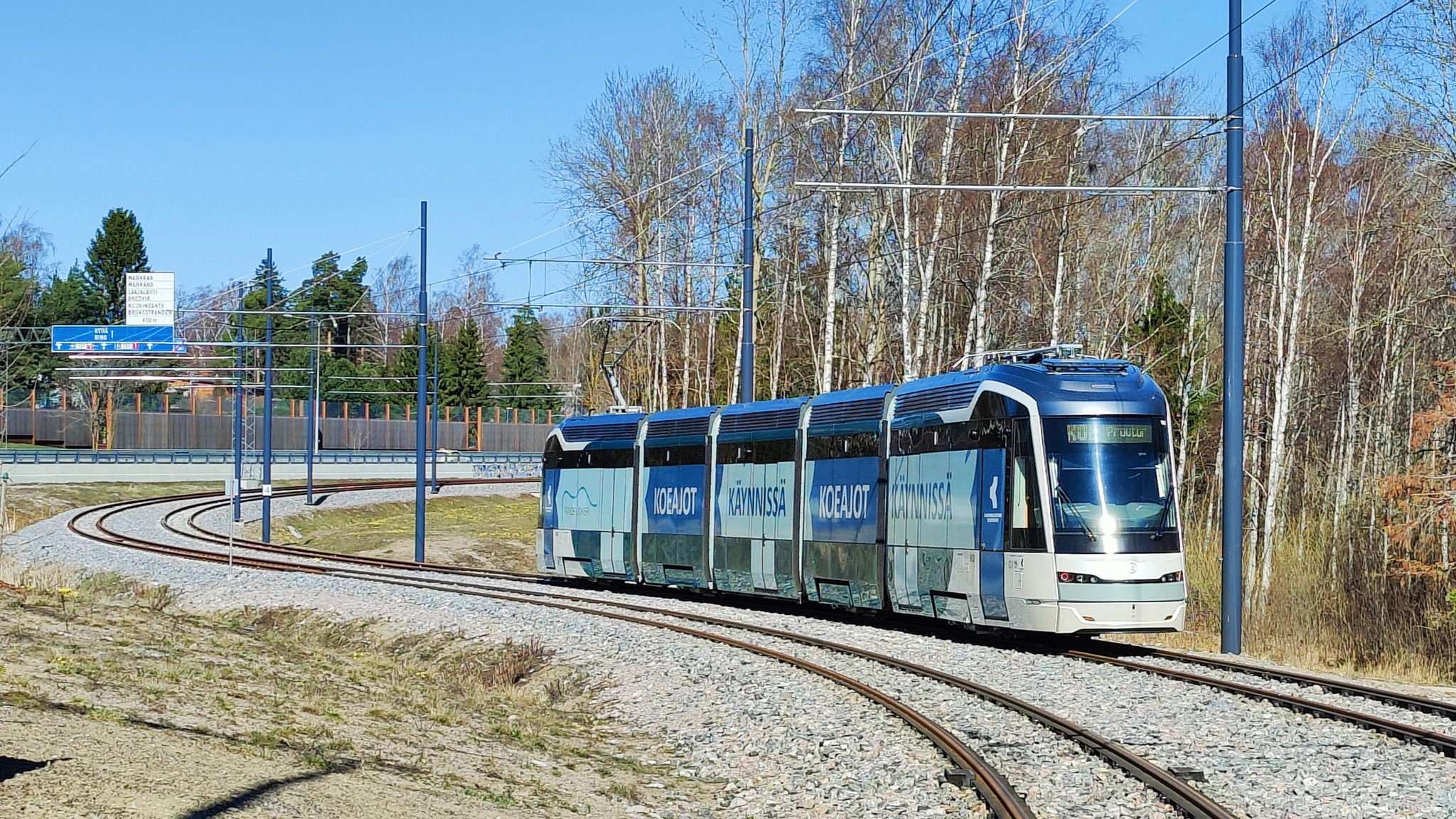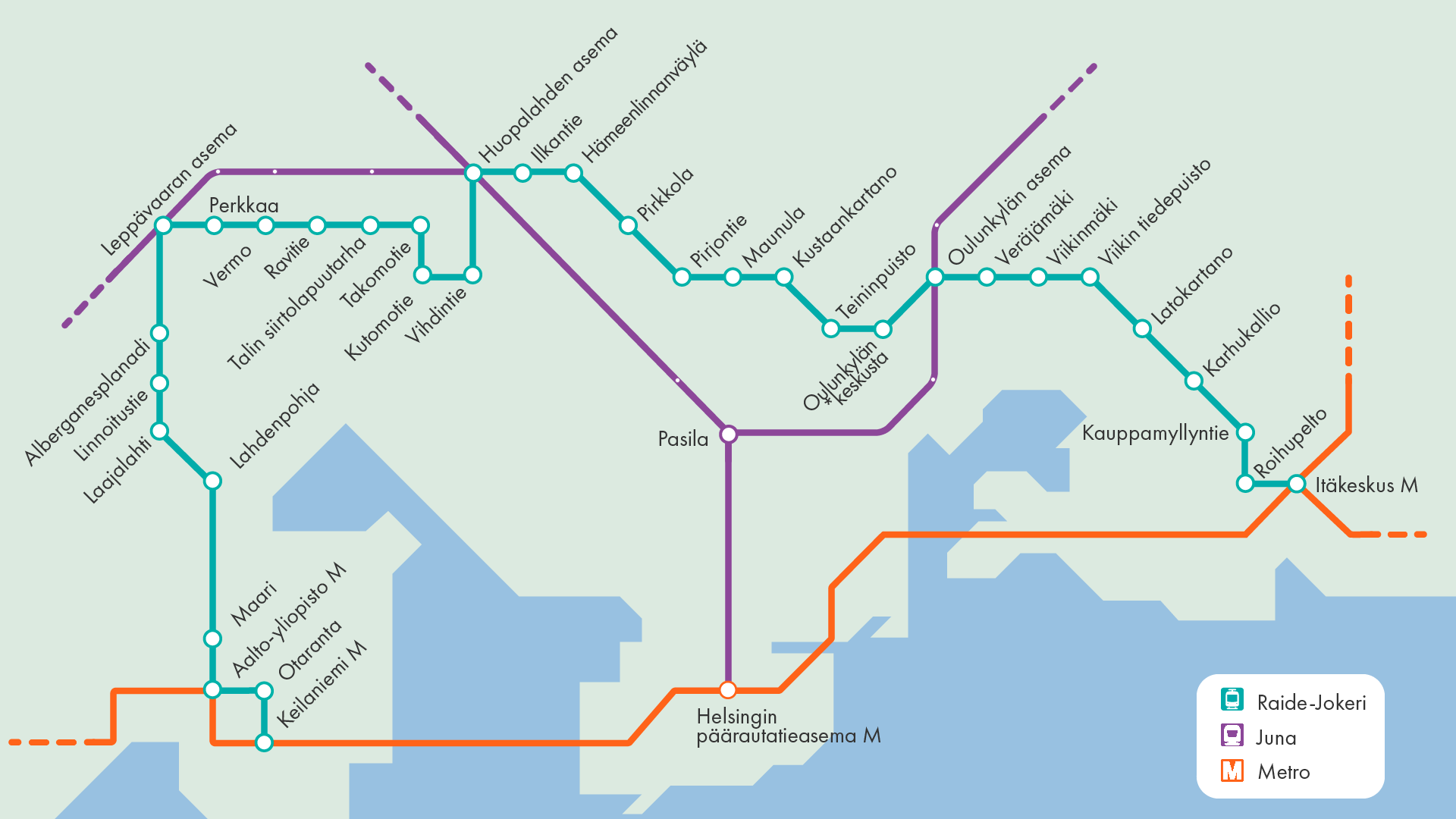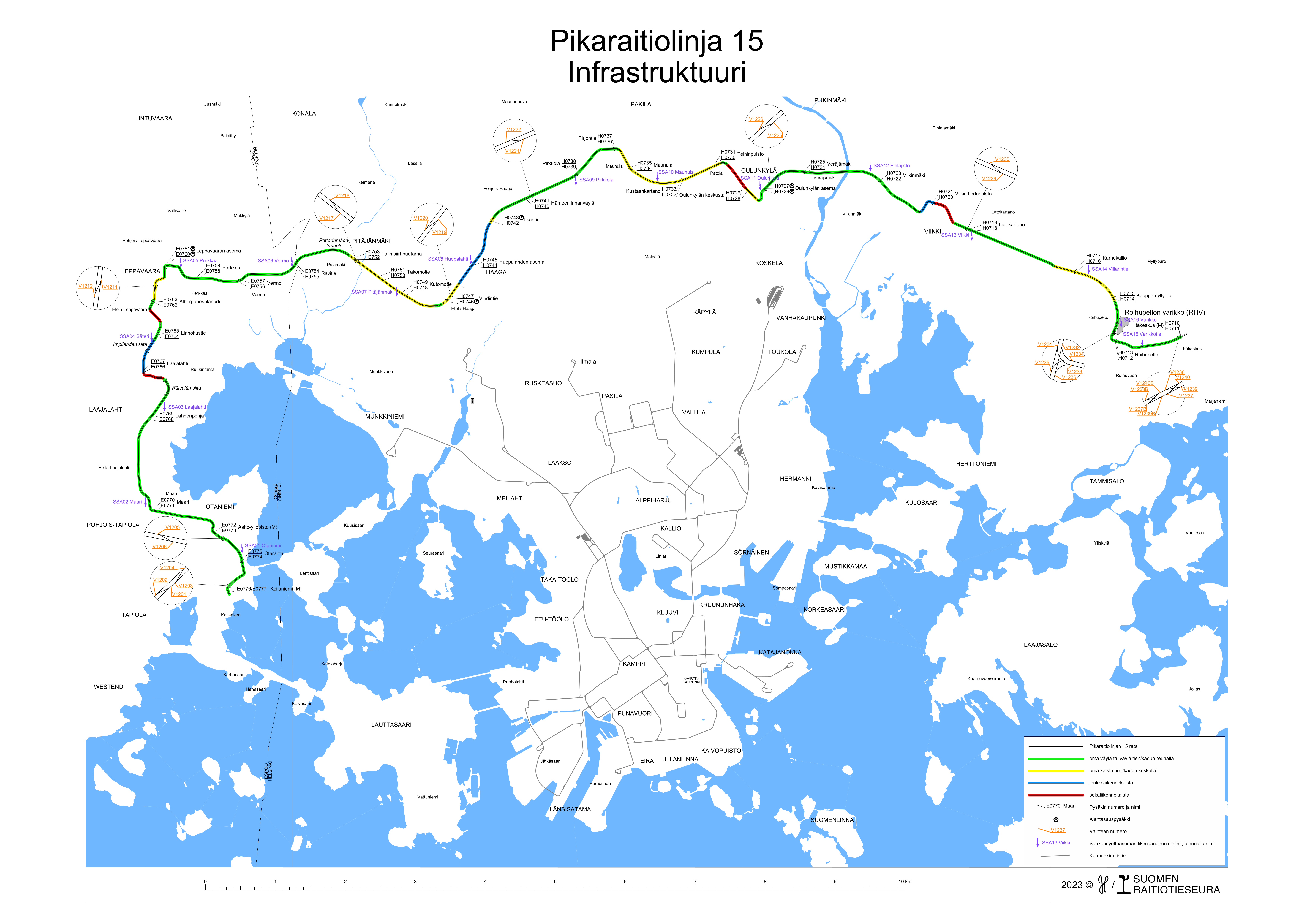As of 1:35AM EST, October 21, Helsinki’s orbital light rail line (15) will begin revenue service, eventually replacing trunk bus line 550. The line is ~25km long, has 34 stops, is built to 1000mm gauge, and attains a top speed of 70km/h in sections. Initial frequency will be every 12mins. To mark the opening, I wanted to share two cab-ride videos made by separate operators.
Eastbound, full ride + depot:
Westbound, full ride:
Map showing network connectivity:
Turquoise: Line 15
Purple: Suburban Trains
Orange: Metro
Source
Track diagram (with existing network):
Green: Own ROW/Side-of-road
Yellow: In-median of road
Blue: Shared road with buses
Red: Shared with all traffic
Grey: Existing tram network
Source
There are a few shortcomings however… The line was initially supposed to go further west (to Tapiola), a second depot was cut (although the land is still protected), a connecting track to the existing network was cut, and the platforms weren’t built to handle double-consists. Also, the eastern terminus is only built as a temporary stop (akin to NAIT in Edmonton).
Regardless, this is a major milestone for the whole network.
Ps. The placement of the new Conduent fare readers is ridiculous:
Source (at 1:55)



